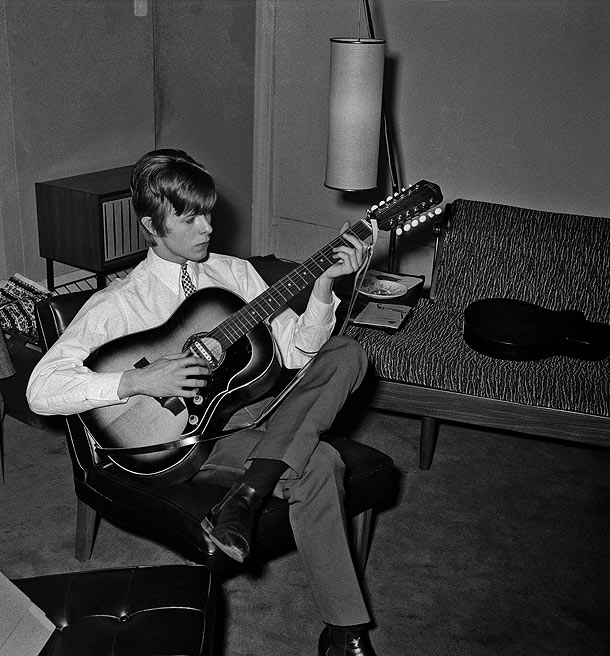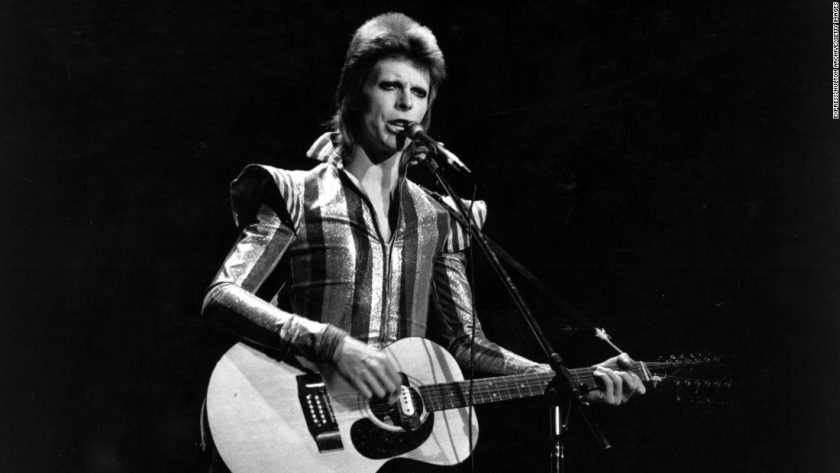The short story is pickup technology started to develop from advances in military technology in the 30's. There are three basic methods to convert string vibration or sound into an electric signal:
- Magnetic pickup- Used on all electric guitars and relies on a magnet moving up and down in a wire coil to produce electricity (electromagnetic effect). When a string vibrates the magnet moves and a weak electric current is produced.
- Piezio pickup- either chemical crystals or ceramics (piezio materials) vibrate when a sound wave hits them by vibration and causing them to compress or expand. Piezio materials have the characteristic producing a weak current when they move against each other. Piezio pickups are installed in contact with the wood and amplify the wood vibration rather than the sound wave that causes the wood vibration.
- Microphone pickup- The piezio material can be set up to vibrate from sound and this is used in microphones and acoustic guitar microphone pickups.
Leading companies are K&K, Sunshine and Braggs and there are many websites that recommend different pickups.
I currently use a Headway EDB-2 and Fishman SA330 acoustic guitar amp but using a mic is difficult to balance and feedback is an issue even with the advanced notch filters on the Headway. My preference is a pickup where I dont have to drill a hole or glue something to a guitar. Also a passive pickup since the Headway is an excellent preamp.
After spending a few hours on websites I decided to check what artists used:
- Trey Anastasio- Trance Audio stereo transducers (likely the Amulet) mounted inside the guitars and a Sunrise full range magnetic pickup in the soundhole. The Trance and the Sunrise are sent to the Mackey mixer where they are mixed down and sent to the Whammy, Boomerang, Victoria Reverberato, and then to a Radial Direct Box and out to the soundboard.
- Derek Trucks- A vintage DeArmond 210
So the both use magnetic soundhole pickups and the Sunrise is over $300.
Checking eBay the 5 pole post -1956 DeArmond 210s are available and generally go for $100 to $150 if you check the sold items. Many list them for $150 to $300 but if you wait for a reasonable seller to show up they can be had below $150.
The 6 pole like Derek's is a more rare (version 2 produced 1949 to 1956) replaced by the 5 pole version produced after 1956. They typically have sold over $200 and up to $300.
Considering the pickup will be used at times in a 48' Martin 00-18 the DeArmond is pretty cool and appropriate. Some on-line reviews complained it sounded 'too electric' but others said this was only if the volume wheel is way up. Additionally many said combining this with a microphone gives a very full accurate acoustic sound. Since the Headway is 2 channel it will be easy to handle a setup adding a microphone.
After checking eBay a few days a 6-pole 210 came up for sale at a reasonable $150 so I took it. Volume wheel is intact and measures 8.99k impedence.



Waiting for it to arrive and will update later.
Bowie also used a 6 pole DeArmond onhis 12-string for many years
 |
| 12 string Framus |
 |
| 12 string Harpoon |
 |
| 12 string Egmond refinished blue |
Also played 12 string Hagstrom on Space Oddity


















